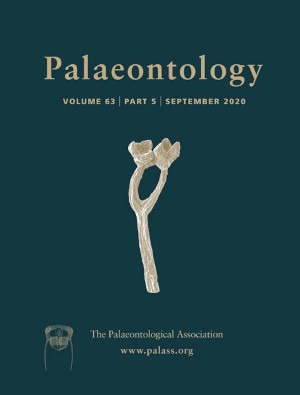Reg. Charity No. 1168330

Turtles are key components of modern vertebrate faunas and their diversity and distributions are likely to be affected by anthropogenic climate change. However, there is limited baseline data on turtle taxonomic richness through time or assessment of their past responses to global environmental change. We used the extensive Triassic–Palaeogene (252–223 Ma) fossil record of terrestrial and freshwater turtles to investigate diversity patterns, finding substantial variation in richness through time and between continents. Globally, turtle richness was low from their Triassic origin until the Late Jurassic. There is strong evidence for high richness in the earliest Cretaceous of Europe, becoming especially high following the Cretaceous Thermal Maximum and declining in all continents by the end‐Cretaceous. At the K–Pg boundary, South American richness levels changed little while North American richness increased, becoming very high during the earliest Palaeogene (Danian). Informative data are lacking elsewhere for this time period. However, the Selandian–Thanetian interval, approximately 5 myr after the K–Pg mass extinction, shows low turtle richness in Asia, Europe and South America, suggesting that the occurrence of exceptional turtle richness in the post‐extinction Paleocene fauna of North America is not globally representative. Richness decreased over the Eocene–Oligocene boundary in North America but increased to its greatest known level for Europe, implying very different responses to dramatic climatic shifts. Time series regressions suggest number of formations sampled and palaeotemperature are the primary influencers of face‐value richness counts, but additional factors not tested here may also be involved.
AcknowledgementsWe would like to thank those authors who contributed to the Paleobiology Database dataset (particularly John Alroy, Matt Carrano, Phil Mannion and David Nicholson). We would also like to thank Evan Vlachos and Gabriel Ferreira for their helpful comments on an earlier version of the manuscript. We declare we have no competing interests. This work was funded by NERC grant no. NE/L002485/1 and TJC received additional funding from the European Union's Horizon 2020 research and innovation programme 2014–2018 under grant agreement 637483 (ERC Starting Grant TERRA to Richard Butler) during the write‐up stage. This is Paleobiology Database publication number 362.
PMB conceived the study. TJC, PAH and RBJB contributed to the dataset. TJC and RBJB analysed the data. TJC, PMB, PAH and RBJB wrote the manuscript.